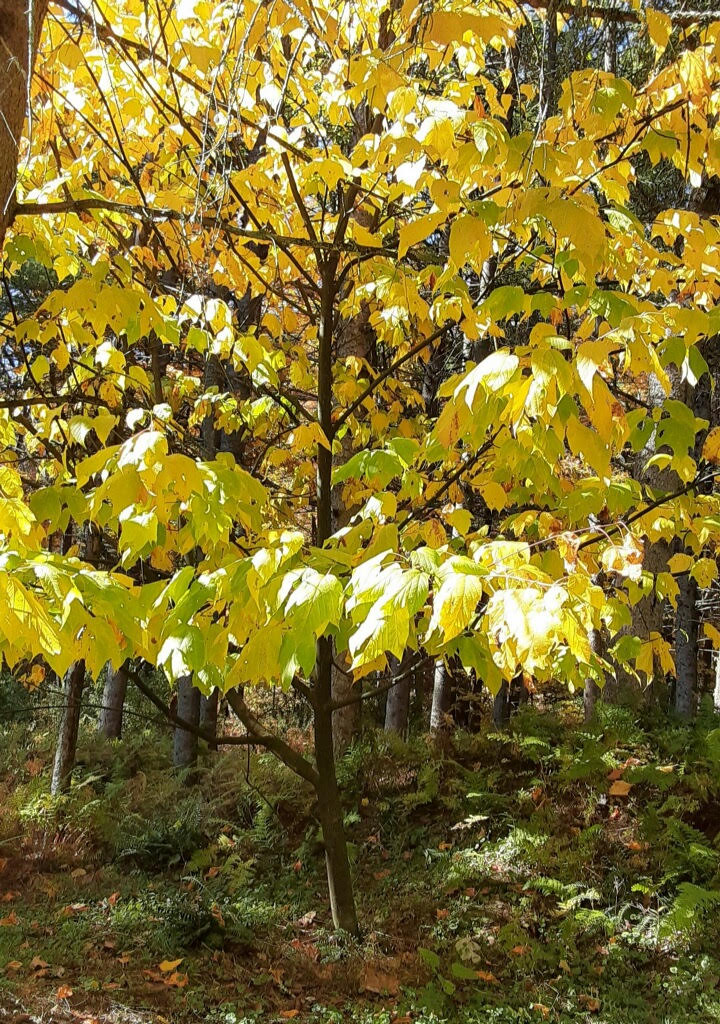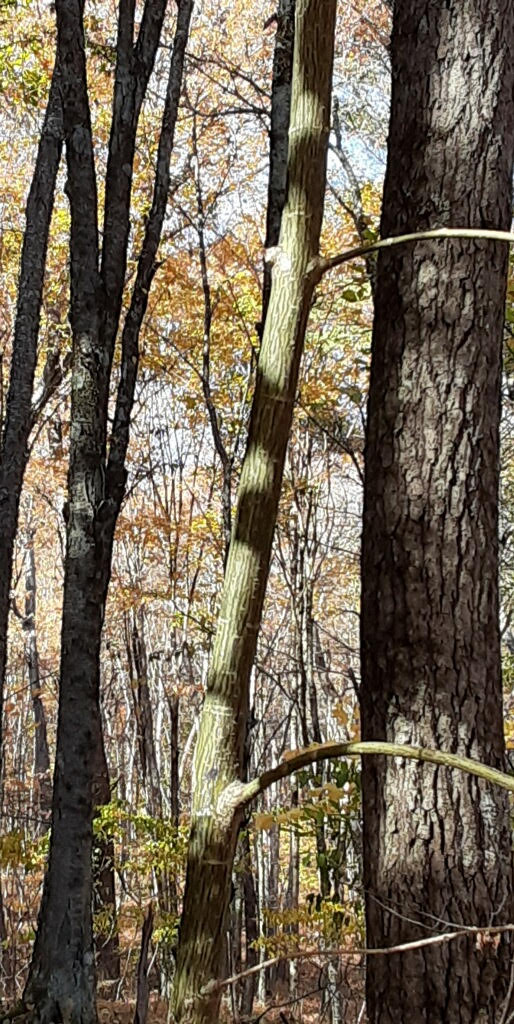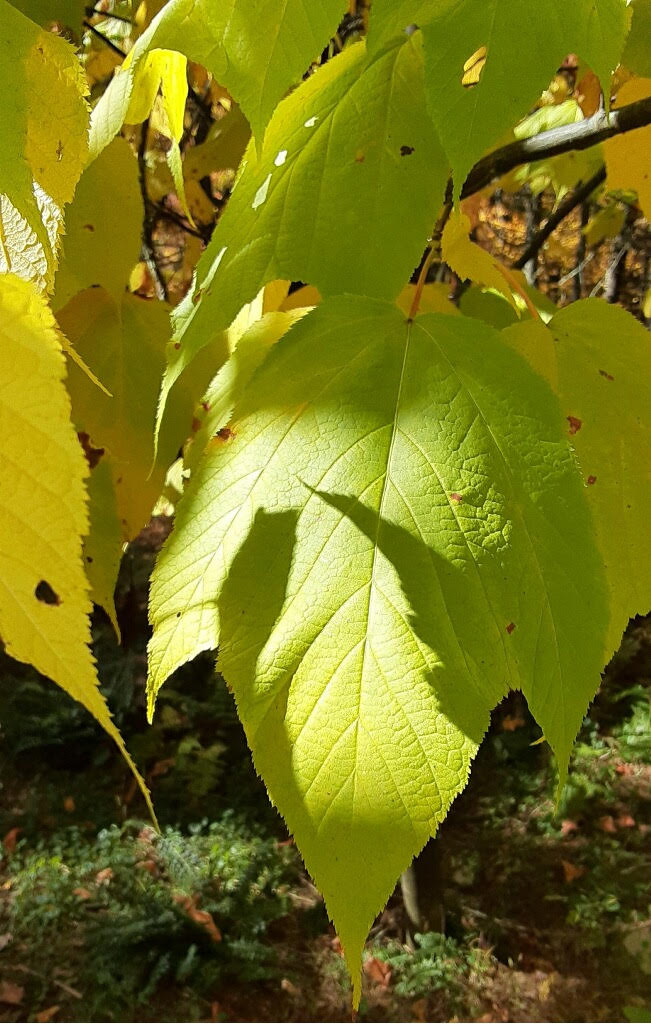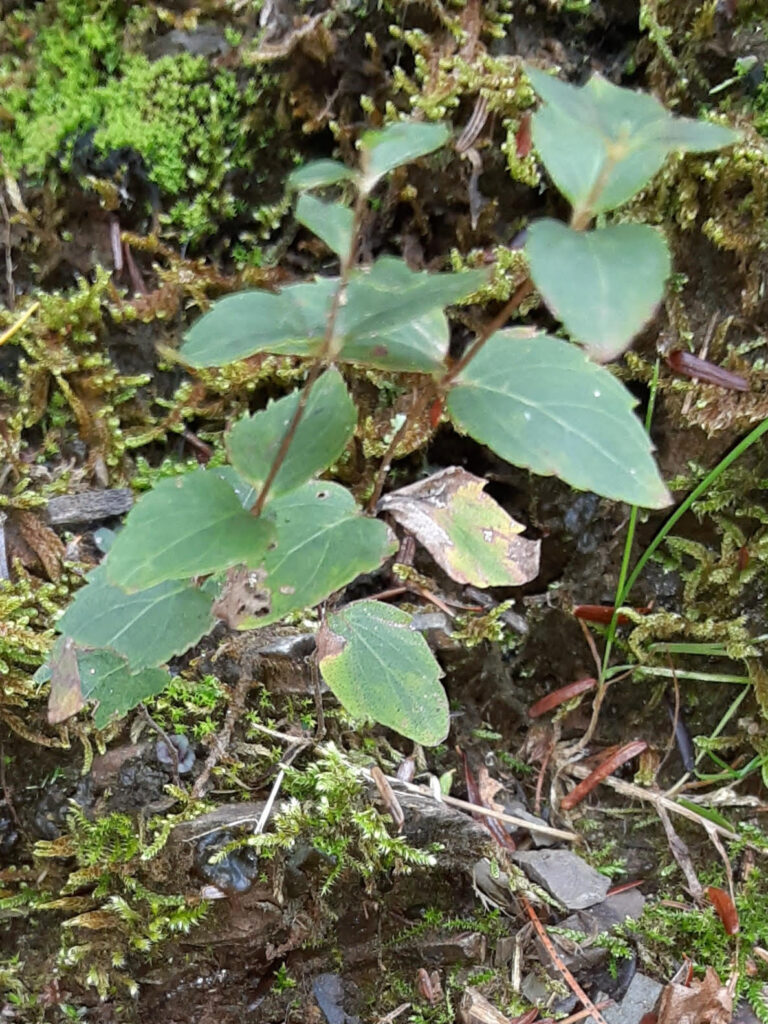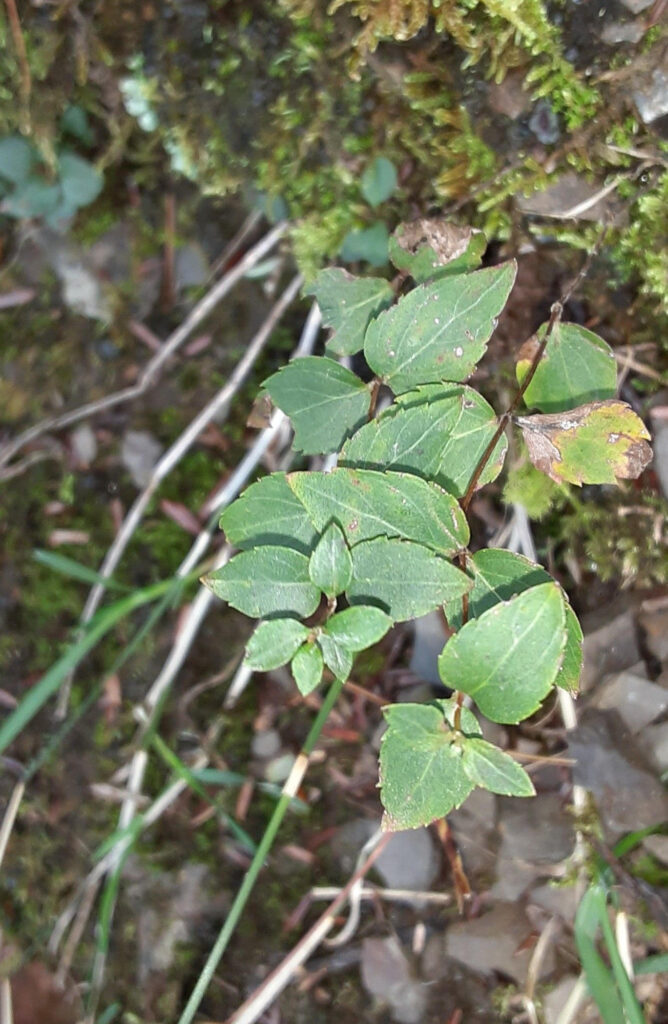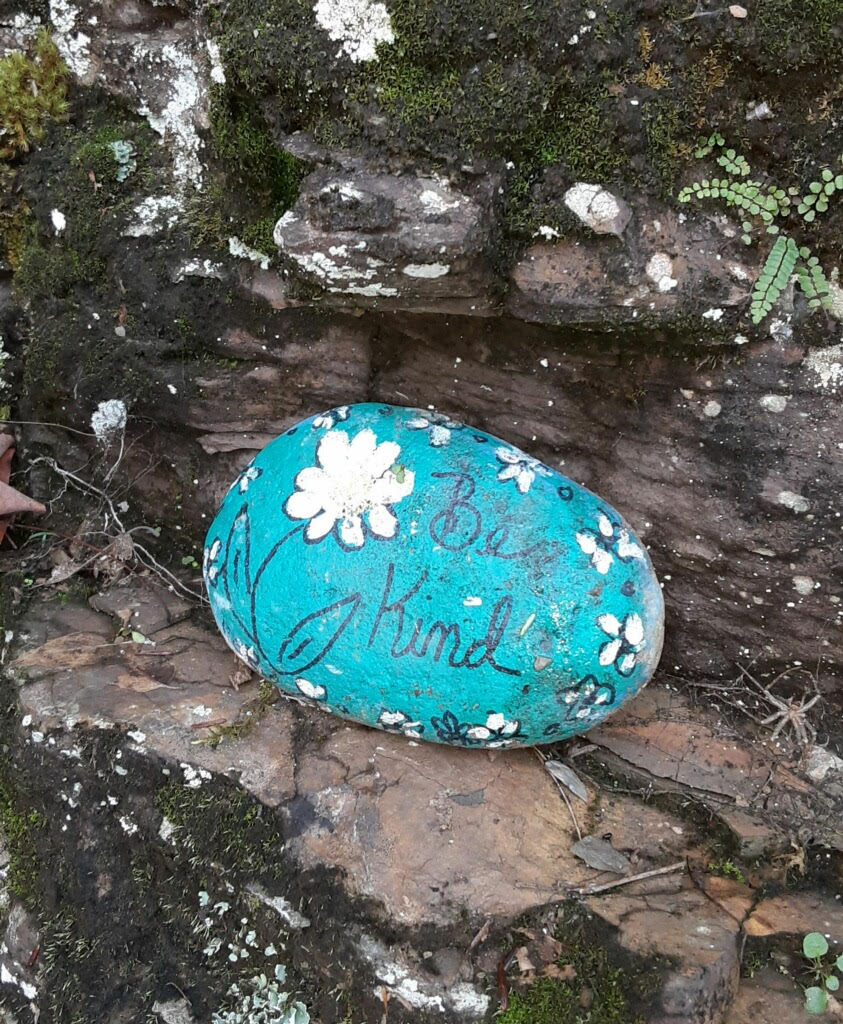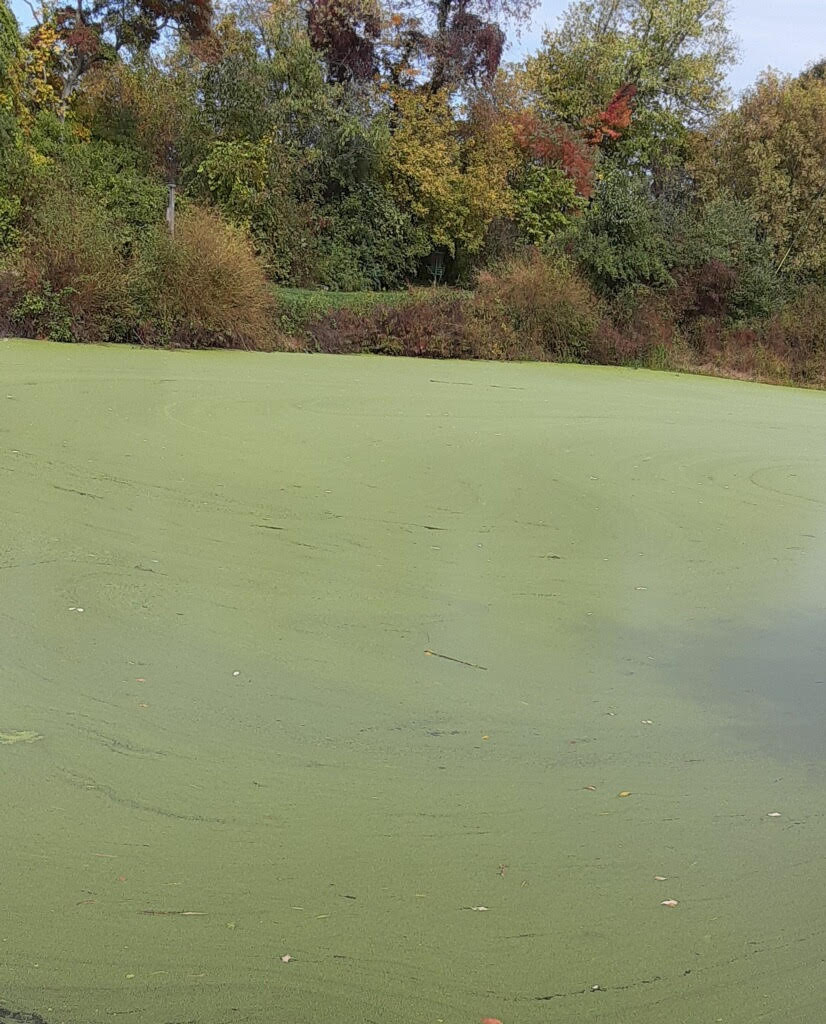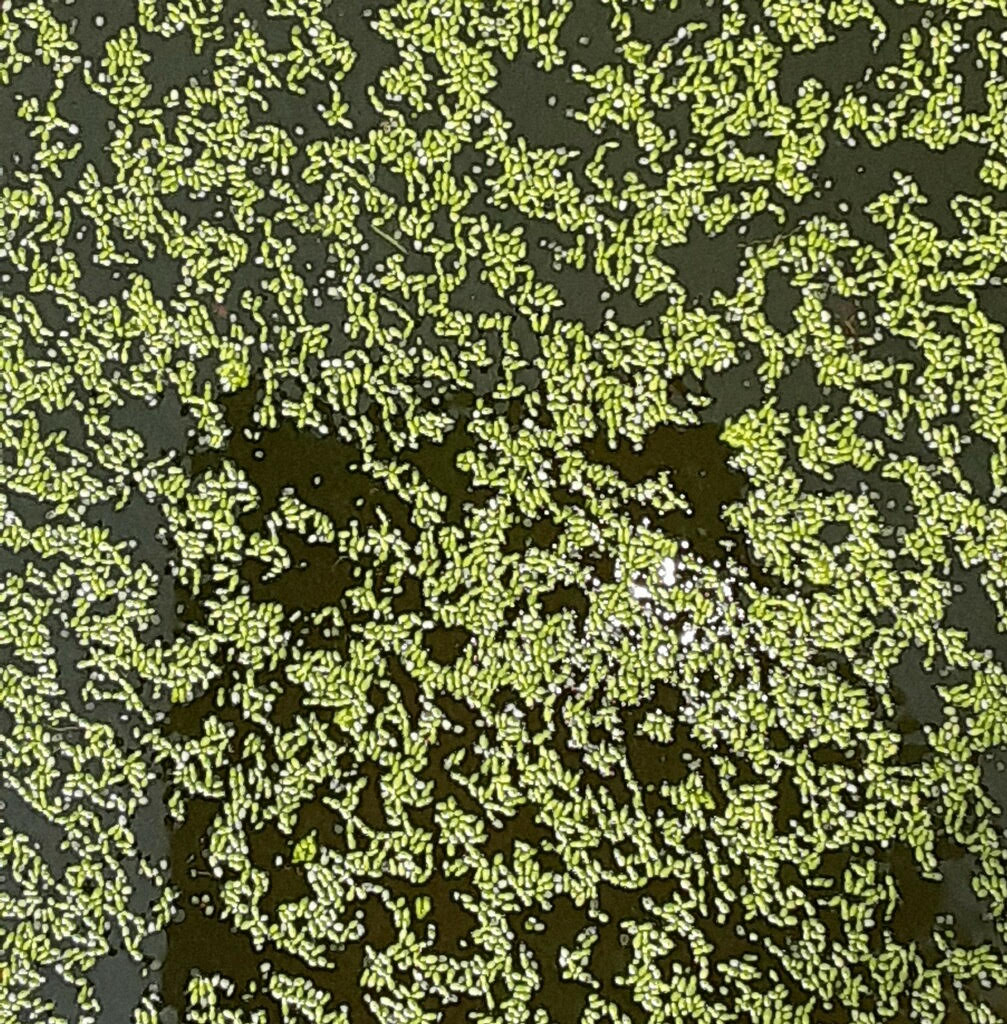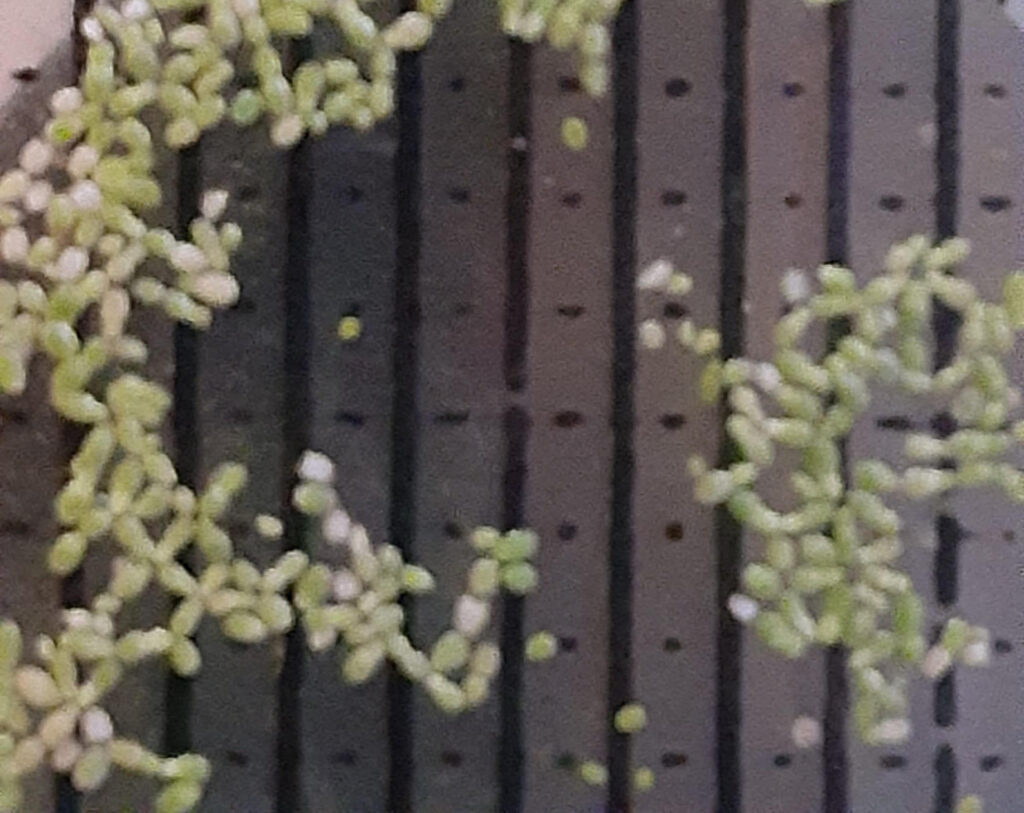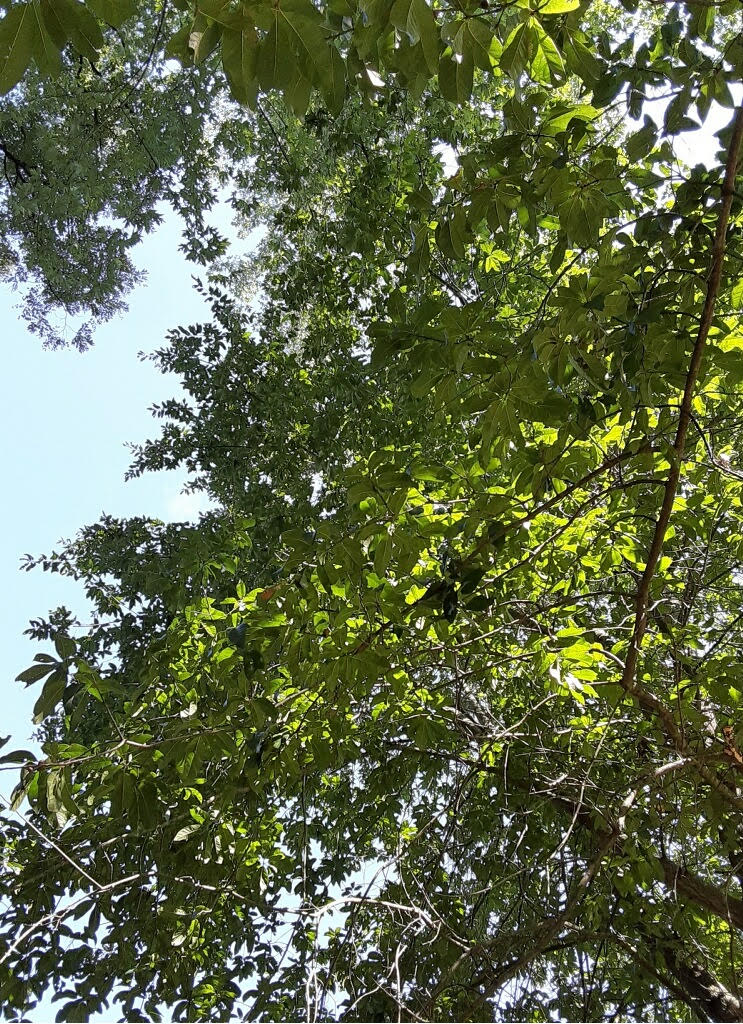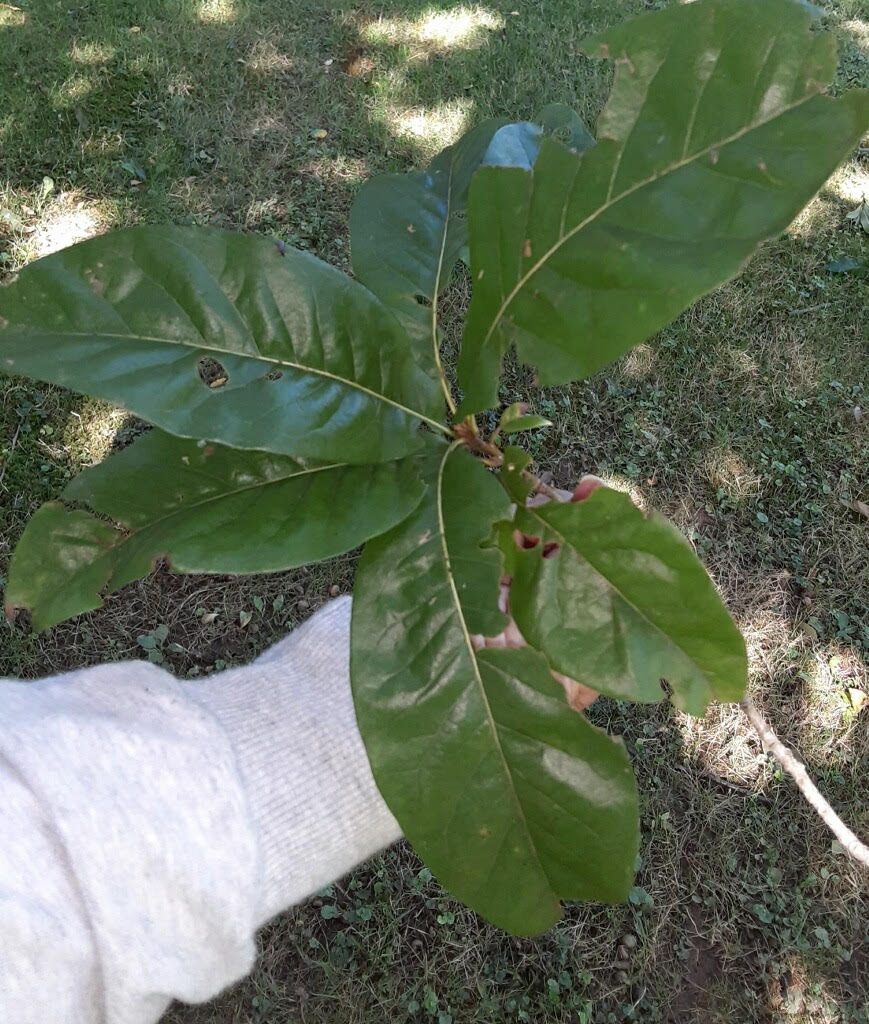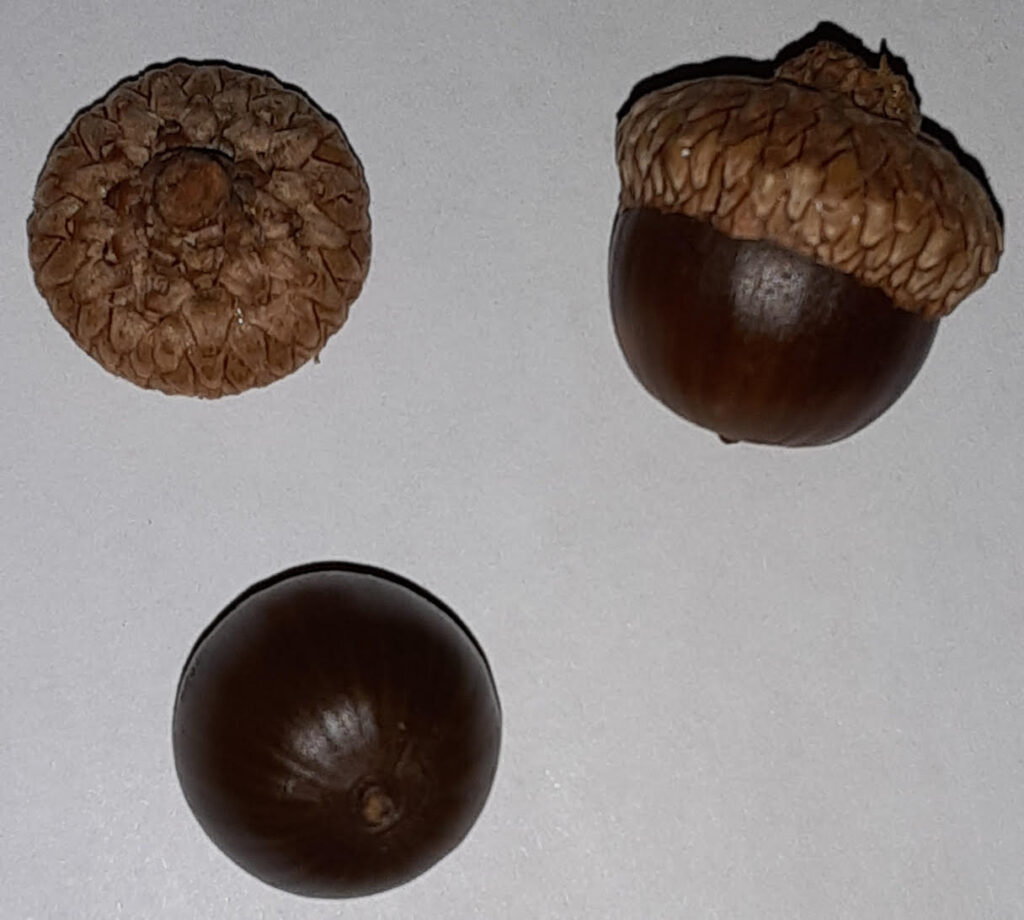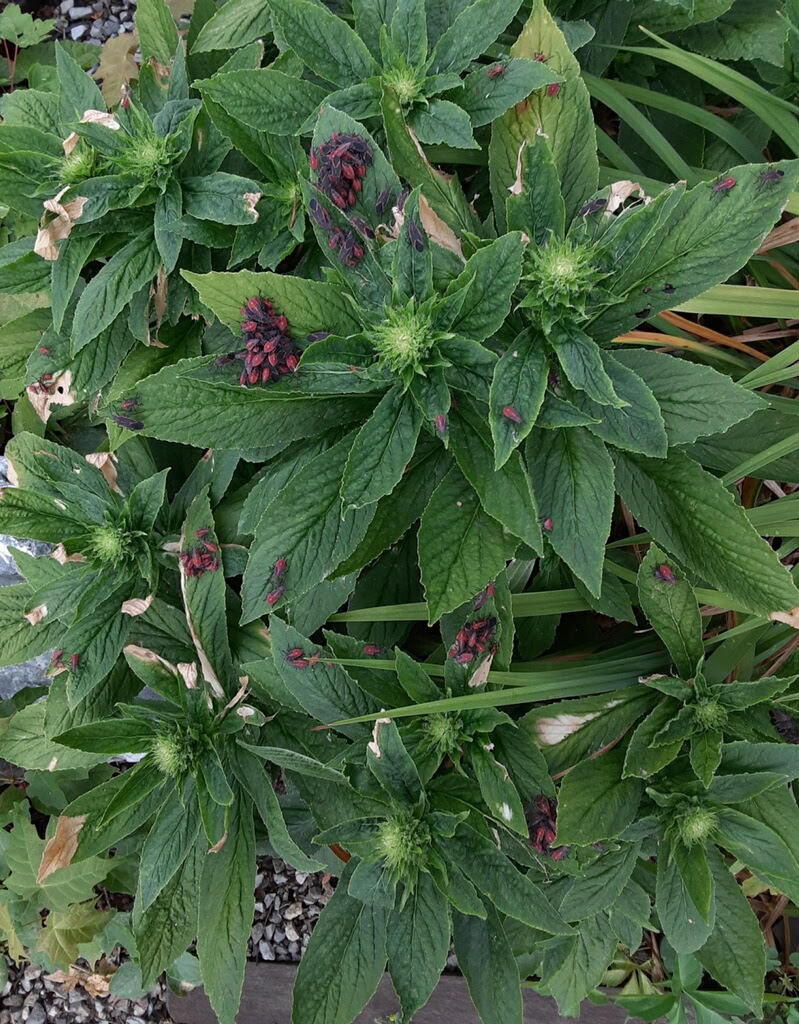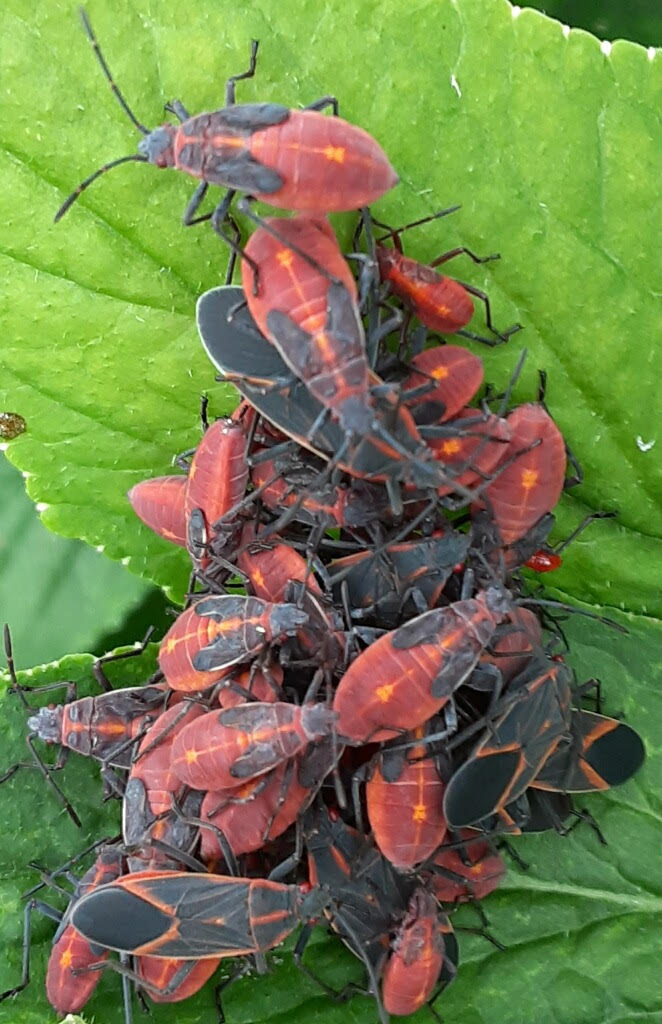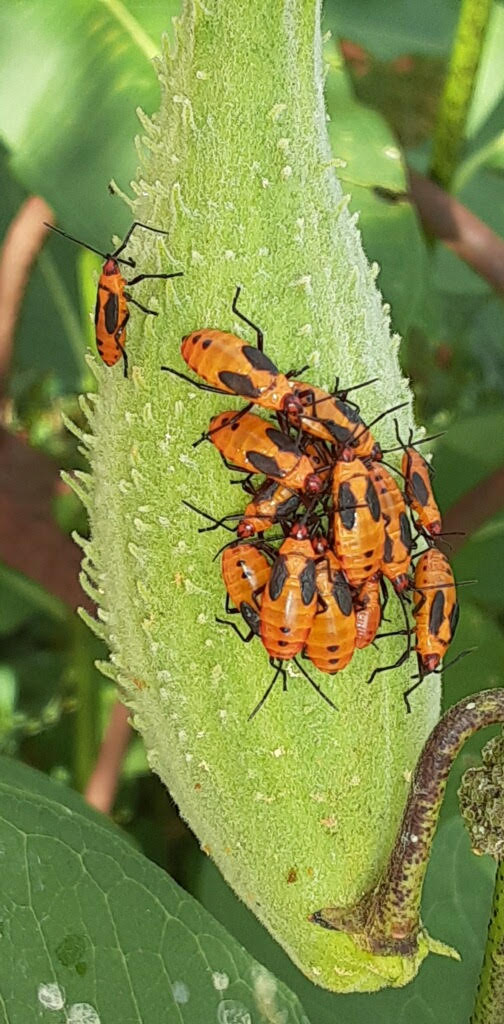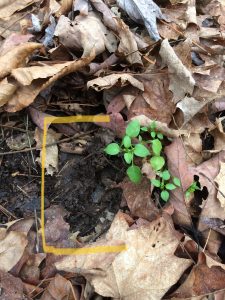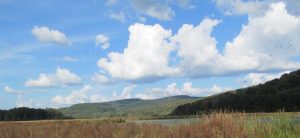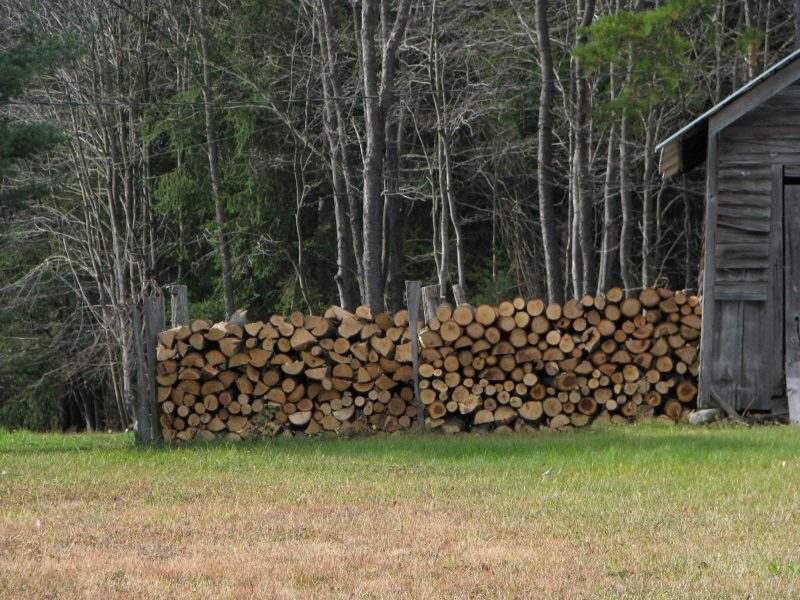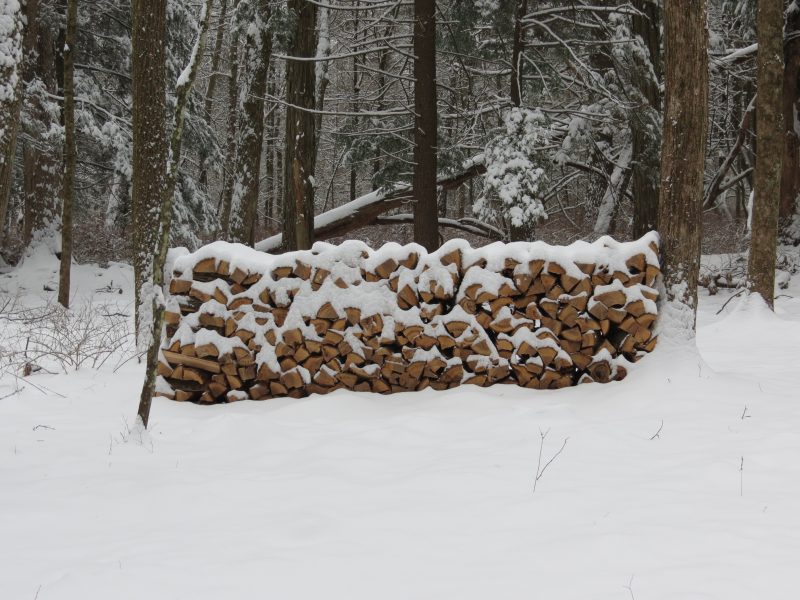By, Susan Sprout
I guess that most people usually expect to read about strawberries in the spring and summer. This small, low-growing perennial strawberry may just be creeping near the edges of your yard right now. Still mowing to mulch your leaves?
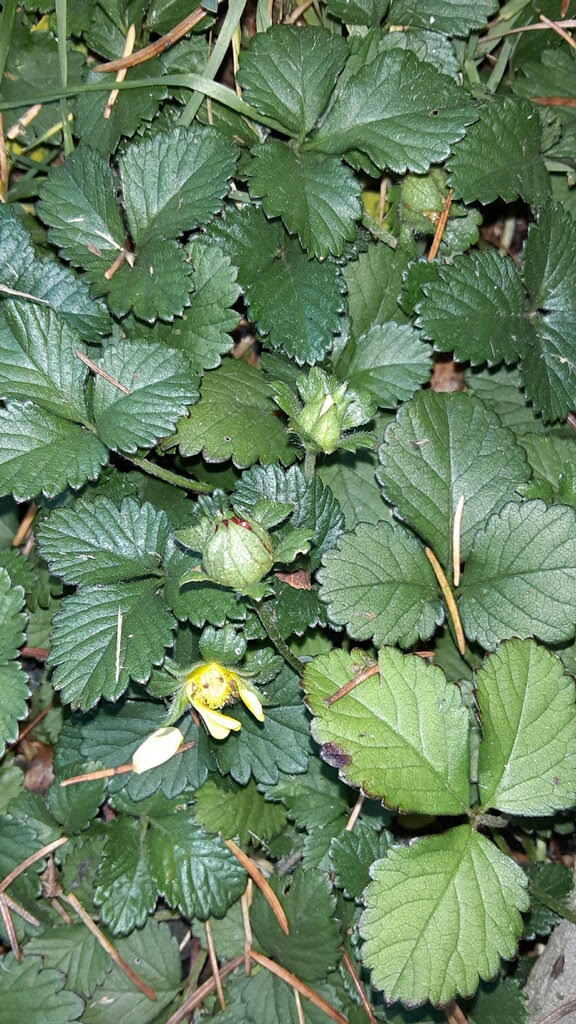
Mock Strawberry or Indian Strawberry loves foot traffic AND mowing AND may still be blooming in your yard. Look for it! I took photos of mine in flower during the first week of November. The yellow flower made me stop and check it out. Then I found some bright red fruits nearby.
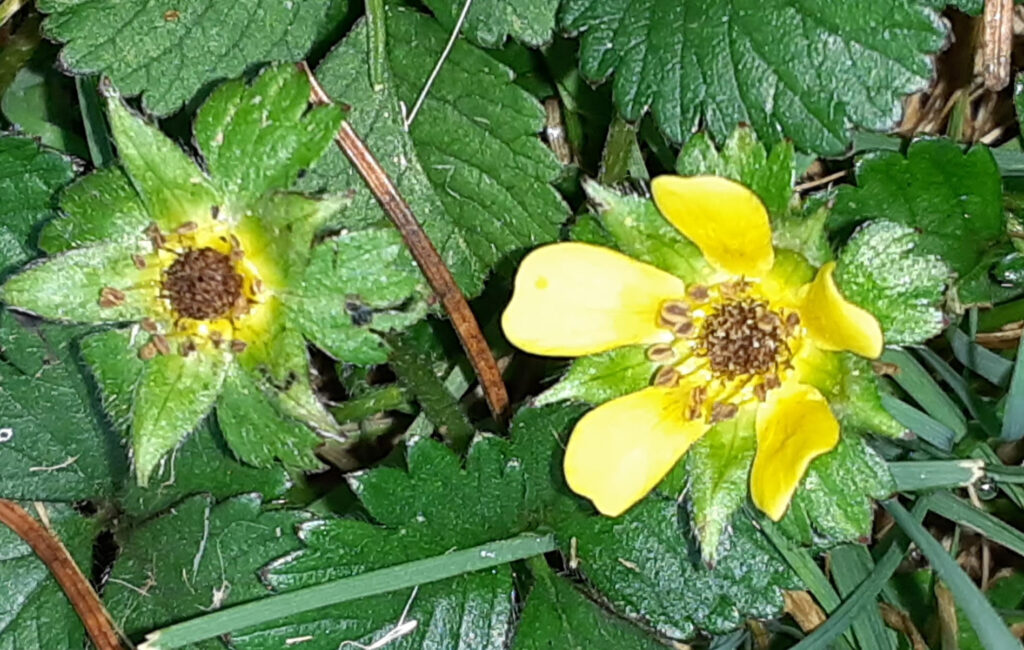
Potentilla indica, previously known as Duchesnea indica, is a member of the Rose Family and came to live in this country from Southeast Asia because people thought it was a pretty ornamental plant that makes a great ground cover. Boy, does it cover the ground! Its reddish stolons, or runners, take off horizontally to root here and there at the nodes where its toothed-leaves emerge. Those leaves are palmate and made up of three leaflets. Blooms appear singly and have five small, pointed sepals and five larger, toothed bracts in alternating whirls under their five yellow petals. After pollination by small bees and flies, the fruit, less than an inch long, appears – pointing upward, making it highly visible. You can clearly see the seeds attached all over the outside of the strawberry like red goosebumps.
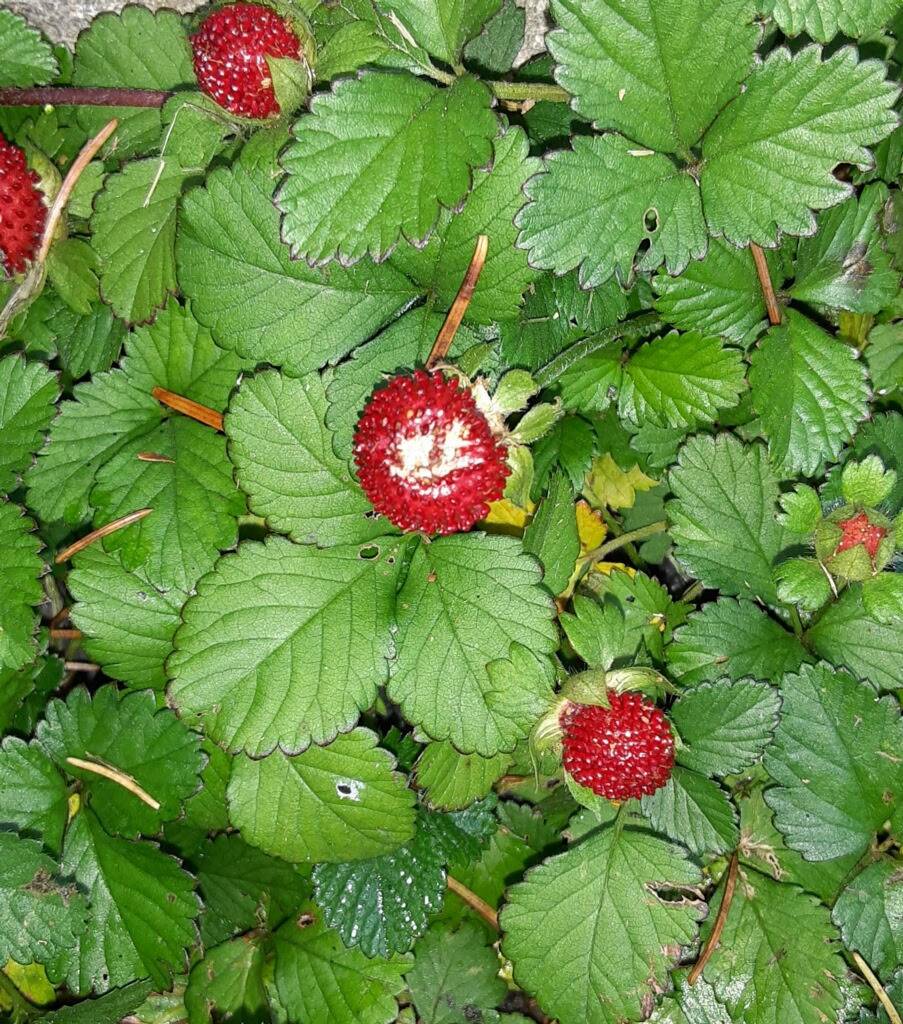
These are not the yummy, sweet, succulent, strawberries of spring. They are small, relatively dry, spongy, and tasteless. Edible, but who would want to? Ha! Birds, squirrels, rabbits, mice, raccoons, deer. This extensively naturalized import does have wildlife benefits! Actually, humans have benefited from these plants for hundreds, if not thousands of years, because of their medicinal qualities: fresh leaf poultices for skin ailments and insect bites, tea for cold symptoms, probably due to vitamin C, D, and iron content. Recent research shows properties that act against the squamous cell activities of various cancers.
Don’t confuse Indian or Mock Strawberry with the Wild Strawberry, Fragaria virginiana, that grows in Pennsylvania. Our native plant has white flowers, blooms in the spring, and has its seeds tucked up inside its fruits!


